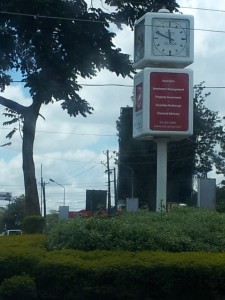In the middle of the Lagos heat, I said to a colleague: “I feel very fortunate to have air conditioning, there are so many people here who just have to bear this heat, that I feel bad about it”. Half-joking, he answered, “On the other hand, everybody has a heater!” Not that Lagos is sunny, but this kept me thinking about the potential of many African countries to springboard ahead in terms of power generation.

The potential for SSA to leapfrog ahead in terms of power generation is waiting to be realized . Electrical grids are insufficient to meet demand in most SSA countries. This adds important costs to businesses, and is a great inconvenience to the population. Renewable energies are the way to go.
The share of power produced from renewables is expected to rise from the current 23% to 40% by 2040, according to the World Energy Outlook 2014. One third of this growth will come from these sources:
- solar power: Sub-Saharan Africa is the second highest region in the world for annual potential solar energy that could be used by humans, behind only the Middle East and North Africa. An advantage of solar power is that it doesn’t require expensive, large-scale grid level infrastructural developments: a solar panel can be placed even on a schoolbag!
- geothermal power: Kenya and Ethiopia are among the 24 countries that generate electricity this way at present. It plays a key role in Kenya’s development plans as it will reduce dependence from hydropower which is vulnerable to climate change; and
- wind power: given the intermittent nature of output from wind power plants, this is expected to play a secondary role complementing electricity generation from conventional sources.
Hydropower infrastructure is also in development. The countries with largest hydropower potential are Cameroon, DR Congo, Ethiopia, Ghana, and Guinea. The problem is that these countries lack domestic scale to justify such large investments. Regional cooperation is necessary. And while utility companies are happy to be energy exporters, few are willing to rely on imports, according to World Energy Outlook 2014. The “Grand Inga” – a megaproject being developed as a public-private-partnership in DRC – exemplifies this.
The development of renewable forms of energy is essential for boosting socio-economic development in Africa. It can safeguard local self-sufficiency, and improve the quality of life both in cities and in rural areas. It’s also a way to raise both inter- and intra-generational solidarity, and to improve the human quality of our communities. Do you agree?


One thought on “Africa Powering Ahead”
Comments are closed.